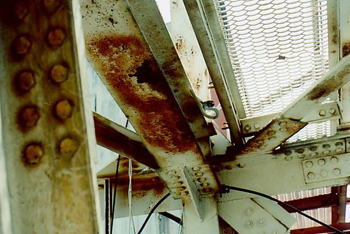Corrosion is a costly problem facing many individuals and organizations on a daily basis. Much research has been done over the last several decades pointing to the presence of soluble salts on a surface causing corrosion to greatly accelerate and reduce the serviceable lifespan of protective coatings. Since protective coatings are the primary protection against corrosion, it is imperative that they perform as designed. Too often a cost is incurred to protect a substrate for 10 years, only to have that coating fail in 5 years or less. Not only has the annual cost for protection increased dramatically, but in most cases degradation of the substrate has occurred.
National Association of Corrosion Engineers Int., Inc. (NACE) and the Society for Protective Coastings (SSPC) have recognized this fact and are taking steps to confront the problem. For many years, the industry recognized that soluble salts were detrimental, but it is only in recent years that we have come to realize the extent of the damage they cause. This recognition is taking place in the form of industry guidelines for measuring soluble salts. The U.S. Navy has already adopted acceptable levels and many other specifiers, including coating manufacturers are rewriting surface preparation specifications that require soluble salts be tested for and limited to certain levels.
There are several methods of testing and measuring the salt levels. Our firm has developed a new test kit, “CHLOR*TEST“. Though the term used is soluble salts, primarily chloride, nitrate and sulfate, these salts are not readily water soluble. The use of CHLOR*RID greatly aids in their removal. CHLOR*RID is added to water, usually in a 1:100 dilution, and can be utilized with a high pressure wash, added to a wet abrasive blast or many other methods (See Directions). CHLOR*RID complexes with the salt ions upon contact, forms a permanent bond, and the salts move off in the spent wash water. A surface contaminated with soluble salts is termed as being contaminated with non-visible contaminants, therefore testing of some type must be performed to determine if such contamination exists. If the contaminants are not removed, it may lead to loss of adhesion, blistering and corrosion continuing beneath a coating. When surfaces are encountered which contain non-visible contaminants, CHLOR*RID is the easiest, least expensive, fastest means of removal. CHLOR*RID is all organic, non-hazardous and bio-degradable.

Corrosion
An example of chloride induced corrosion.


